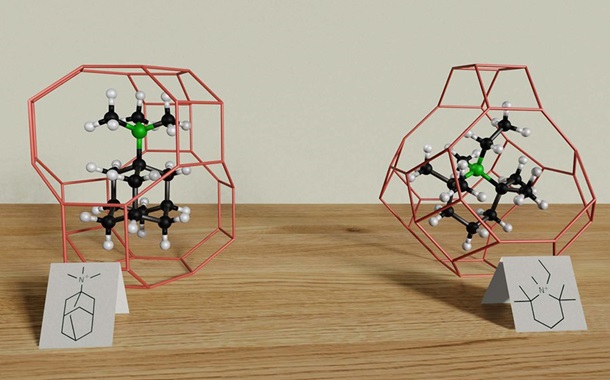Exploring Key Factors Influencing Sports Enthusiasts' Purchase of Sponsored Brands
Downloads
Doi:10.28991/HIJ-2024-05-04-07
Full Text:PDF
Downloads
Kunkel, T., Funk, D., & King, C. (2014). Developing a conceptual understanding of consumer-based league brand associations. Journal of Sport Management, 28(1), 49–67. doi:10.1123/jsm.2011-0153.
Berry, L. L. (2000). Cultivating service brand equity. Journal of the Academy of Marketing Science, 28(1), 128–137. doi:10.1177/0092070300281012.
Kunkel, T., & Biscaia, R. (2020). Sport Brands: Brand Relationships and Consumer Behavior. Sport Marketing Quarterly, 29(1), 3–17. doi:10.32731/smq.291.032020.01.
Alonso-Dos-Santos, M., Vveinhardt, J., Calabuig-Moreno, F., & Montoro-Rios, F. J. (2016). Involvement and image transfer in sports sponsorship. Engineering Economics, 27(1), 78–89. doi:10.5755/j01.ee.27.1.8536.
Biscaia, R., & Rocha, C. (2018). Sponsorship of the 2016 Rio Olympic Games: An empirical examination of the reactions to local sponsors and rival brands. Sport Marketing Quarterly, 27(3), 180–196. doi:10.32731/smq.273.092018.04.
Hsiao, C. H., Tang, K. Y., & Su, Y. S. (2021). An Empirical Exploration of Sports Sponsorship: Activation of Experiential Marketing, Sponsorship Satisfaction, Brand Equity, and Purchase Intention. Frontiers in Psychology, 12, 677137. doi:10.3389/fpsyg.2021.677137.
Kwon, Y., & Cornwell, T. B. (2020). Sport sponsorship announcement and stock returns: a meta-analytic review. International Journal of Sports Marketing and Sponsorship, 22(3), 608–630. doi:10.1108/IJSMS-05-2020-0085.
Eddy, T., & Cork, B. C. (2019). Sponsorship antecedents and outcomes in participant sport settings. International Journal of Sports Marketing and Sponsorship, 20(1), 26–42. doi:10.1108/IJSMS-05-2016-0018.
Lee, W. Y., Hur, Y., & Sung, M. (2015). Happy to support: Emotion as a mediator in brand building through philanthropic corporate sponsorship. Social Behavior and Personality, 43(6), 977–992. doi:10.2224/sbp.2015.43.6.977.
Guo, H., Ye, Y., Lin, Y. C., Khan, A., Chen, S. C., & Liou, J. H. (2024). Evaluating the determinants on students' switching intentions towards distance learning: an extension of the theory of planned behavior. Cogent Social Sciences, 10(1), 2356721. doi:10.1080/23311886.2024.2356721.
Almrafee, M., & Akaileh, M. (2024). Customers' purchase intention of renewable energy in Jordan: the case of solar panel systems using an extended theory of planned behavior (TPB). International Journal of Energy Sector Management, 18(3), 457–473. doi:10.1108/IJESM-01-2023-0002.
Ajzen, I. (1991). The theory of planned behavior. Organizational Behavior and Human Decision Processes. Disability, CBR and Inclusive Development, 33(1), 52–68.
Tiwari, A., Kumar, A., Kant, R., & Jaiswal, D. (2024). Impact of fashion influencers on consumers' purchase intentions: theory of planned behaviour and mediation of attitude. Journal of Fashion Marketing and Management, 28(2), 209–225. doi:10.1108/JFMM-11-2022-0253.
Braksiek, M., Thormann, T. F., & Wicker, P. (2021). Intentions of Environmentally Friendly Behavior among Sports Club Members: An Empirical Test of the Theory of Planned Behavior across Genders and Sports. Frontiers in Sports and Active Living, 3, 657183. doi:10.3389/fspor.2021.657183.
Hussain, U., & Cunningham, G. B. (2023). The determinants of Muslim women's pro-sport Hijab purchase intention: a theory of planned behavior perspective. European Sport Management Quarterly, 23(4), 1249–1268. doi:10.1080/16184742.2021.1976242.
Tao, Y. T., Lin, M. Der, & Khan, A. (2022). The impact of CSR on green purchase intention: Empirical evidence from the green building Industries in Taiwan. Frontiers in Psychology, 13, 13. doi:10.3389/fpsyg.2022.1055505.
Yim, B. H., & Byon, K. K. (2021). Validation of the Sport Fan Model of Goal-Directed Behavior: Comparison to Theory of Reasoned Action, Theory of Planned Behavior, and Model of Goal-Directed Behavior. Journal of Global Sport Management, 6(4), 388–408. doi:10.1080/24704067.2020.1765699.
Ajzen, I., & Driver, B. L. (1992). Application of the Theory of Planned Behavior to Leisure Choice. Journal of Leisure Research, 24(3), 207–224. doi:10.1080/00222216.1992.11969889.
Son, J., Jin, B., & George, B. (2013). Consumers' purchase intention toward foreign brand goods. Management Decision, 51(2), 434–450. doi:10.1108/00251741311301902.
Summer, T. A., Belleau, B. D., & Xu, Y. (2006). Predicting purchase intention of a controversial luxury apparel product. Journal of Fashion Marketing and Management, 10(4), 405–419. doi:10.1108/13612020610701947.
Cowan, K., & Kinley, T. (2014). Green spirit: Consumer empathies for green apparel. International Journal of Consumer Studies, 38(5), 493–499. doi:10.1111/ijcs.12125.
Hwang, C., & Kim, T. H. (2021). Muslim Women's Purchasing Behaviors toward Modest Activewear in the United States. Clothing and Textiles Research Journal, 39(3), 175–189. doi:10.1177/0887302X20926573.
Zhang, L., Fan, Y., Zhang, W., & Zhang, S. (2019). Extending the theory of planned behavior to explain the effects of cognitive factors across different kinds of green products. Sustainability (Switzerland), 11(15), 4222. doi:10.3390/su11154222.
Ruangkanjanases, A., You, J. J., Chien, S. W., Ma, Y., Chen, S. C., & Chao, L. C. (2020). Elucidating the Effect of Antecedents on Consumers' Green Purchase Intention: An Extension of the Theory of Planned Behavior. Frontiers in Psychology, 11, 1433. doi:10.3389/fpsyg.2020.01433.
Sung, K. S. (Kyong), & Lee, S. (2023). Customer brand co-creation behavior and brand sincerity through CSR interactivity: The role of psychological implications in service-dominant logic. International Journal of Hospitality Management, 108, 103388. doi:10.1016/j.ijhm.2022.103388.
Lee, Y., & Lin, C. A. (2022). The effects of a sustainable vs conventional apparel advertisement on consumer perception of CSR image and attitude toward the brand. Corporate Communications, 27(2), 388–403. doi:10.1108/CCIJ-05-2021-0051.
Lo, A. (2020). Effects of customer experience in engaging in hotels' CSR activities on brand relationship quality and behavioural intention. Journal of Travel and Tourism Marketing, 37(2), 185–199. doi:10.1080/10548408.2020.1740140.
Sen, S., & Bhattacharya, C. B. (2001). Does doing good always lead to doing better? Consumer reactions to corporate social responsibility. Journal of Marketing Research, 38(2), 225–243. doi:10.1509/jmkr.38.2.225.18838.
Bhattacharya, C. B., & Sen, S. (2003). Consumer-company identification: A framework for understanding consumers' relationships with companies. Journal of Marketing, 67(2), 76–88. doi:10.1509/jmkg.67.2.76.18609.
Kim, H., Hur, W. M., & Yeo, J. (2015). Corporate brand trust as a mediator in the relationship between consumer perception of CSR, corporate hypocrisy, and corporate reputation. Sustainability (Switzerland), 7(4), 3683–3694. doi:10.3390/su7043683.
Lindgreen, A., Xu, Y., Maon, F., & Wilcock, J. (2012). Corporate social responsibility brand leadership: A multiple case study. European Journal of Marketing, 46(7), 965–993. doi:10.1108/03090561211230142.
Tuškej, U., Golob, U., & Podnar, K. (2013). The role of consumer-brand identification in building brand relationships. Journal of Business Research, 66(1), 53–59. doi:10.1016/j.jbusres.2011.07.022.
Tuškej, U., & Podnar, K. (2018). Exploring selected antecedents of consumer–brand identification: The nature of consumer's interactions with product brands. Baltic Journal of Management, 13(4), 451–470. doi:10.1108/BJM-08-2017-0268.
Büyükdağ, N., & Kitapci, O. (2021). Antecedents of consumer-brand identification in terms of belonging brands. Journal of Retailing and Consumer Services, 59, 102420. doi:10.1016/j.jretconser.2020.102420.
Stokburger-Sauer, N., Ratneshwar, S., & Sen, S. (2012). Drivers of consumer–brand identification. International Journal of Research in Marketing, 29(4), 406–418.
Kato, T. (2019). Loyalty management in durable consumer goods: trends in the influence of recommendation intention on repurchase intention by time after purchase. Journal of Marketing Analytics, 7(2), 76–83. doi:10.1057/s41270-019-00050-x.
Zeithaml, V. A. (1988). Consumer Perceptions of Price, Quality, and Value: A Means-End Model and Synthesis of Evidence. Journal of Marketing, 52(3), 2. doi:10.2307/1251446.
Aaker, D. A. (1992). The Value of Brand Equity. Journal of Business Strategy, 13(4), 27–32. doi:10.1108/eb039503.
Holt, D. B., Quelch, J. A., & Taylor, E. L. (2004). How global brands complete. Harvard Business Review, 82(9), 68-75+136.
Salehzadeh, R., & Pool, J. K. (2017). Brand Attitude and Perceived Value and Purchase Intention toward Global Luxury Brands. Journal of International Consumer Marketing, 29(2), 74–82. doi:10.1080/08961530.2016.1236311.
Wei, C. L. (2022). How Relationship Quality, Service Quality, and Value Affect the Intention to Purchase IT/IS Outsourcing Services. Information Systems Management, 39(3), 202–219. doi:10.1080/10580530.2021.1883776.
Das, G. (2014). Linkages of retailer awareness, retailer association, retailer perceived quality and retailer loyalty with purchase intention: A study of Indian food retail brands. Journal of Retailing and Consumer Services, 21(3), 284–292. doi:10.1016/j.jretconser.2014.02.005.
Ajzen, I., & Fishbein, M. (1975). A Bayesian analysis of attribution processes. Psychological Bulletin, 82(2), 261–277. doi:10.1037/h0076477.
Knowles, S. R., Hyde, M. K., & White, K. M. (2012). Predictors of Young People's Charitable Intentions to Donate Money: An Extended Theory of Planned Behavior Perspective. Journal of Applied Social Psychology, 42(9), 2096–2110. doi:10.1111/j.1559-1816.2012.00932.x.
Pakpour, A. H., Lin, C. K., Safdari, M., Lin, C. Y., Chen, S. H., & Hamilton, K. (2021). Using an integrated social cognition model to explain green purchasing behavior among adolescents. International Journal of Environmental Research and Public Health, 18(23), 12663. doi:10.3390/ijerph182312663.
Bhardwaj, V., Park, H., & Kim, Y. K. (2011). The effect of Indian consumers' life satisfaction on brand behavior toward a U.S. global brand. Journal of International Consumer Marketing, 23(2), 105–116. doi:10.1080/08961530.2011.543052.
Song, J., Kim, J., & Cho, K. (2018). Understanding users' continuance intentions to use smart-connected sports products. Sport Management Review, 21(5), 477–490. doi:10.1016/j.smr.2017.10.004.
Eddosary, M., Ko, Y. J., Sagas, M., & Kim, H. Y. (2015). Consumers' intention to attend soccer events: Application and extension of the theory of planned behavior. Psychological Reports, 117(1), 89–102. doi:10.2466/01.05.PR0.117c13z7.
Ajzen, I. (2020). The theory of planned behavior: Frequently asked questions. Human Behavior and Emerging Technologies, 2(4), 314–324. doi:10.1002/hbe2.195.
Mitchell, A. A., & Olson, J. C. (1981). Are Product Attribute Beliefs the Only Mediator of Advertising Effects on Brand Attitude? Journal of Marketing Research, 18(3), 318. doi:10.2307/3150973.
Hasbullah, N. A., Osman, A., Abdullah, S., Salahuddin, S. N., Ramlee, N. F., & Soha, H. M. (2016). The Relationship of Attitude, Subjective Norm and Website Usability on Consumer Intention to Purchase Online: An Evidence of Malaysian Youth. Procedia Economics and Finance, 35, 493–502. doi:10.1016/s2212-5671(16)00061-7.
Watts, L., & Chi, T. (2019). Key factors influencing the purchase intention of activewear: an empirical study of US consumers. International Journal of Fashion Design, Technology and Education, 12(1), 46–55. doi:10.1080/17543266.2018.1477995.
Fishbein, M., & Ajzen, I. (1977). Belief, attitude, intention, and behavior: An Introduction to Theory and Research. Philosophy and Rhetoric, 10(2), 130-132
Bellucci, G., Feng, C., Camilleri, J., Eickhoff, S. B., & Krueger, F. (2018). The role of the anterior insula in social norm compliance and enforcement: Evidence from coordinate-based and functional connectivity meta-analyses. Neuroscience and Biobehavioral Reviews, 92, 378–389. doi:10.1016/j.neubiorev.2018.06.024.
Byon, K. K., Lee, S., & Baker, T. A. (2014). A cross-cultural study of purchase intention of sponsored products based on American and Korean spectators of the 2010 FIFA World Cup South Africa. Sport, Business and Management: An International Journal, 4(2), 158–177. doi:10.1108/SBM-04-2013-0005.
Hogg, M. A., & Smith, J. R. (2007). Attitudes in social context: A social identity perspective. European Review of Social Psychology, 18(1), 89–131. doi:10.1080/10463280701592070.
Terry, D. J., & Hogg, M. A. (1996). Group norms and the attitude-behavior relationship: A role for group identification. Personality and Social Psychology Bulletin, 22(8), 776–793. doi:10.1177/0146167296228002.
Jin, B., & Kang, J. H. (2010). Face or Subjective Norm? Chinese College Students' Purchase Behaviors toward Foreign Brand Jeans. Clothing and Textiles Research Journal, 28(3), 218–233. doi:10.1177/0887302X09353083.
Chi, T., & Zheng, Y. (2016). Understanding environmentally friendly apparel consumption: An empirical study of Chinese consumers. International Journal of Sustainable Society, 8(3), 206–227. doi:10.1504/IJSSOC.2016.079080.
Aguinis, H. (2010). Organizational responsibility: Doing good and doing well. APA handbook of industrial and organizational psychology, Vol 3: Maintaining, expanding, and contracting the organization, 855–879. doi:10.1037/12171-024.
Du, S., Bhattacharya, C. B., & Sen, S. (2010). Maximizing business returns to corporate social responsibility (CSR): The role of CSR communication. International Journal of Management Reviews, 12(1), 8–19. doi:10.1111/j.1468-2370.2009.00276.x.
Dutton, J. E., Dukerich, J. M., & Harquail, C. V. (1994). Organizational Images and Member Identification. Administrative Science Quarterly, 39(2), 239. doi:10.2307/2393235.
Hur, W. M., Moon, T. W., & Kim, H. (2020). When and how does customer engagement in CSR initiatives lead to greater CSR participation? The role of CSR credibility and customer–company identification. Corporate Social Responsibility and Environmental Management, 27(4), 1878–1891. doi:10.1002/csr.1933.
Wolter, J. S., Brach, S., Cronin, J. J., & Bonn, M. (2016). Symbolic drivers of consumer-brand identification and disidentification. Journal of Business Research, 69(2), 785–793. doi:10.1016/j.jbusres.2015.07.011.
Fournier, S. (1998). Consumers and their brands: Developing relationship theory in consumer research. Journal of Consumer Research, 24(4), 343–373. doi:10.1086/209515.
Kolbl, Ž., Arslanagic-Kalajdzic, M., & Diamantopoulos, A. (2019). Stereotyping global brands: Is warmth more important than competence? Journal of Business Research, 104, 614–621. doi:10.1016/j.jbusres.2018.12.060.
Duarte, P. A. de O., & Silva, S. C. e. (2020). The role of consumer-cause identification and attitude in the intention to purchase cause-related products. International Marketing Review, 37(4), 603–620. doi:10.1108/IMR-04-2018-0159.
Williams, A. S., & Son, S. (2022). Sport rebranding: the effect of different degrees of sport logo redesign on brand attitude and purchase intention. International Journal of Sports Marketing and Sponsorship, 23(1), 155–172. doi:10.1108/IJSMS-01-2021-0016.
Chiu, W., & Won, D. (2021). Influence of sports fan ethnocentrism on identification and media consumption intention: a preliminary investigation with Taiwanese baseball fans. Sport in Society, 25(1), 23–41. doi:10.1080/17430437.2020.1772232.
Susanty, A., Puspitasari, N. B., Prastawa, H., Listyawardhani, P., & Tjahjono, B. (2021). Antecedent Factors of Green Purchasing Behavior: Learning Experiences, Social Cognitive Factors, and Green Marketing. Frontiers in Psychology, 12, 777531. doi:10.3389/fpsyg.2021.777531.
Chi, T., & Kilduff, P. P. D. (2011). Understanding consumer perceived value of casual sportswear: An empirical study. Journal of Retailing and Consumer Services, 18(5), 422–429. doi:10.1016/j.jretconser.2011.06.004.
Kumar, A., Lee, H. J., & Kim, Y. K. (2009). Indian consumers' purchase intention toward a United States versus local brand. Journal of Business Research, 62(5), 521–527. doi:10.1016/j.jbusres.2008.06.018.
Yu, S., & Lee, J. (2019). The effects of consumers' perceived values on intention to purchase upcycled products. Sustainability (Switzerland), 11(4), 1034. doi:10.3390/su11041034.
Sweeney, J. C., & Soutar, G. N. (2001). Consumer perceived value: The development of a multiple item scale. Journal of Retailing, 77(2), 203–220. doi:10.1016/S0022-4359(01)00041-0.
García-Fernández, J., Gálvez-Ruíz, P., Fernández-Gavira, J., Vélez-Colón, L., Pitts, B., & Bernal-García, A. (2018). The effects of service convenience and perceived quality on perceived value, satisfaction and loyalty in low-cost fitness centers. Sport Management Review, 21(3), 250–262. doi:10.1016/j.smr.2017.07.003.
Zhou, F., Mou, J., Su, Q., & Jim Wu, Y. C. (2020). How does consumers' Perception of Sports Stars' Personal Brand Promote Consumers' brand love? A mediation model of global brand equity. Journal of Retailing and Consumer Services, 54, 102012. doi:10.1016/j.jretconser.2019.102012.
Campbell, S., Greenwood, M., Prior, S., Shearer, T., Walkem, K., Young, S., Bywaters, D., & Walker, K. (2020). Purposive sampling: complex or simple? Research case examples. Journal of Research in Nursing, 25(8), 652–661. doi:10.1177/1744987120927206.
Ames, H., Glenton, C., & Lewin, S. (2019). Purposive sampling in a qualitative evidence synthesis: A worked example from a synthesis on parental perceptions of vaccination communication. BMC Medical Research Methodology, 19(1), 1–9. doi:10.1186/s12874-019-0665-4.
Rai, N., & Thapa, B. (2015). A study on purposive sampling method in research. Kathmandu: Kathmandu School of Law, 5(1), 8-15.
Anderson, J. C., & Gerbing, D. W. (1988). Structural Equation Modeling in Practice: A Review and Recommended Two-Step Approach. Psychological Bulletin, 103(3), 411–423. doi:10.1037/0033-2909.103.3.411.
Fornell, C., & Larcker, D. F. (1981). Evaluating Structural Equation Models with Unobservable Variables and Measurement Error. Journal of Marketing Research, 18(1), 39. doi:10.2307/3151312.
Jackson, D. L., Gillaspy, J. A., & Purc-Stephenson, R. (2009). Reporting Practices in Confirmatory Factor Analysis: An Overview and Some Recommendations. Psychological Methods, 14(1), 6–23. doi:10.1037/a0014694.
Loo, R., & Loewen, P. (2004). Confirmatory factor analyses of scores from full and short versions of the Marlowe-Crowne Social Desirability scale. Journal of Applied Social Psychology, 34(11), 2343–2352. doi:10.1111/j.1559-1816.2004.tb01980.x.
Black, W. C., Babin, B. J., Anderson, R. E., & Tatham, R. L. (2006). Multivariate Data Analysis. Pearson Prentice Hall, New Jersey, United States.
Hu, L. T., & Bentler, P. M. (1999). Cutoff criteria for fit indexes in covariance structure analysis: Conventional criteria versus new alternatives. Structural Equation Modeling, 6(1), 1–55. doi:10.1080/10705519909540118.
Doll, W. J., Raghunathan, T. S., Lim, J. S., & Gupta, Y. P. (1995). A confirmatory factor analysis of the user information satisfaction instrument. Information Systems Research, 6(2), 177–188. doi:10.1287/isre.6.2.177.
Henry, J. W., & Stone, R. W. (1994). A Structural Equation Model of End-User Satisfaction with a Computer-Based Medical Information System. Information Resources Management Journal (IRMJ), 7(3), 21–33. doi:10.4018/irmj.1994070102.
Podsakoff, P. M., MacKenzie, S. B., Lee, J. Y., & Podsakoff, N. P. (2003). Common Method Biases in Behavioral Research: A Critical Review of the Literature and Recommended Remedies. Journal of Applied Psychology, 88(5), 879–903. doi:10.1037/0021-9010.88.5.879.
Lo, A., & Qu, H. (2015). A theoretical model of the impact of a bundle of determinants on tourists' visiting and shopping intentions: A case of mainland Chinese tourists. Journal of Retailing and Consumer Services, 22, 231–243. doi:10.1016/j.jretconser.2014.08.004.
Paek, B., Morse, A., Hutchinson, S., & Lim, C. H. (2021). Examining the Relationship for Sport Motives, Relationship Quality, and Sport Consumption Intention. Sport Management Review, 24(2), 322–344. doi:10.1016/j.smr.2020.04.003.
Stokburger-Sauer, N. E., & Teichmann, K. (2014). The relevance of consumer”brand identification in the team sport industry. Marketing Review St. Gallen, 31(2), 20–31. doi:10.1365/s11621-014-0337-z.
Leonnard, L., Sjahrifa, C., Fathia, C. A., & Daniya, D. (2019). Young Indonesian Muslim women consumer behavior toward modest sportswear. Journal of Business & Retail Management Research, 13(04), 26. doi:10.24052/jbrmr/v13is04/art-26.
Shan, Y., & King, K. W. (2015). The Effects of Interpersonal Tie Strength and Subjective Norms on Consumers' Brand-Related eWOM Referral Intentions. Journal of Interactive Advertising, 15(1), 16–27. doi:10.1080/15252019.2015.1016636.
Ajzen, I., & Sheikh, S. (2013). Action versus inaction: Anticipated affect in the theory of planned behavior. Journal of Applied Social Psychology, 43(1), 155–162. doi:10.1111/j.1559-1816.2012.00989.x.
Shen, C. C., & Chiou, J. S. (2009). The effect of community identification on attitude and intention toward a blogging community. Internet Research, 19(4), 393–407. doi:10.1108/10662240910981362.
Torres, P., Augusto, M., & Godinho, P. (2017). Predicting high consumer-brand identification and high repurchase: Necessary and sufficient conditions. Journal of Business Research, 79, 52–65. doi:10.1016/j.jbusres.2017.05.029.
Kleine, R. E., Kleine, S. S., & Kernan, J. B. (1993). Mundane Consumption and the Self: A Social-Identity Perspective. Journal of Consumer Psychology, 2(3), 209–235. doi:10.1016/S1057-7408(08)80015-0.
Carlson, B. D., Donavan, D. T., & Cumiskey, K. J. (2009). Consumer-brand relationships in sport: Brand personality and identification. International Journal of Retail and Distribution Management, 37(4), 370–384. doi:10.1108/09590550910948592.
Kim, M. S., & James, J. (2016). The theory of planned behaviour and intention of purchase sport team licensed merchandise. Sport, Business and Management: An International Journal, 6(2), 228–243. doi:10.1108/SBM-02-2014-0005.
Sun, L., & Yu, T. R. (2015). The impact of corporate social responsibility on employee performance and cost. Review of Accounting and Finance, 14(3), 262–284. doi:10.1108/RAF-03-2014-0025.
Tingchi Liu, M., Anthony Wong, I., Shi, G., Chu, R., & L. Brock, J. (2014). The impact of corporate social responsibility (CSR) performance and perceived brand quality on customer-based brand preference. Journal of Services Marketing, 28(3), 181-194.
Aaker, D. A., & Jacobson, R. (2001). The value relevance of brand attitude in high-technology markets. Journal of Marketing Research 38(4), 18905. doi:10.1509/jmkr.38.4.485.18905.
Liu, M. T., Wong, I. K. A., Tseng, T. H., Chang, A. W. Y., & Phau, I. (2017). Applying consumer-based brand equity in luxury hotel branding. Journal of Business Research, 81, 192–202. doi:10.1016/j.jbusres.2017.06.014.
Khan, A., Albert Jing-Fuh Yang, & Yemning J. Chen. (2020). Impact of Buying Counterfeit Brands on the Brand Image of Original Brands. Asia Proceedings of Social Sciences, 6(1), 89–94. doi:10.31580/apss.v6i1.1281.
Chen, C. C., Khan, A., Hongsuchon, T., Ruangkanjanases, A., Chen, Y. T., Sivarak, O., & Chen, S. C. (2021). The role of corporate social responsibility and corporate image in times of crisis: The mediating role of customer trust. International Journal of Environmental Research and Public Health, 18(16), 8275. doi:10.3390/ijerph18168275.
Khan, A., Chen, C. C., Suanpong, K., Ruangkanjanases, A., Kittikowit, S., & Chen, S. C. (2021). The impact of CSR on sustainable innovation ambidexterity: The mediating role of sustainable supply chain management and second-order social capital. Sustainability (Switzerland), 13(21), 12160. doi:10.3390/su132112160.
Khan, A., Chen, L. R., & Hung, C. Y. (2021). The role of corporate social responsibility in supporting second-order social capital and sustainable innovation ambidexterity. Sustainability (Switzerland), 13(13), 6994. doi:10.3390/su13136994.
Hindmarsh, M., Ikramullah, A., Ruiz-Alba, J. L., & López-Tenorio, P. J. (2024). Grassroots football club stakeholders' sponsorship: the role of happiness and shared values. Management Decision, 62(2), 513–531. doi:10.1108/MD-02-2023-0281.
Wang, Q., Fuchs, S., & Bodet, G. (2024). Elite versus grassroots sports events sponsorship in China: an exploration of sponsors' motives and objectives. International Journal of Sports Marketing and Sponsorship, 25(3), 465–482. doi:10.1108/IJSMS-04-2023-0065.
Leng, H. K., & Zhang, J. J. (2023). Emerging trends in sport sponsorship and branding: An introduction. Sports Sponsorship and Branding: Global Perspectives and Emerging Trends, 1–18. doi:10.4324/9781003458890-1.
Gordillo-Rodriguez, M. T., Marín-Montín, J., & Fernández Gómez, J. D. (2024). Sports celebrities and advertising on Instagram: a case study of brand sponsorship in Spain. International Journal of Sports Marketing and Sponsorship, 25(4), 862–894. doi:10.1108/IJSMS-11-2023-0228.
Wang, S., & Khan, A. (2024). Exploring the factors driving the sustainable consumer intentions for over-the-air updates in electric vehicles. Energy Exploration and Exploitation, 01445987241284101. doi:10.1177/01445987241284101.
Guo, Z., Liu, G., Liu, Z., & Khan, A. (2023). Evaluating the Determinants of Young Runners' Continuance Intentions toward Wearable Devices. HighTech and Innovation Journal, 4(4), 720–738. doi:10.28991/HIJ-2023-04-04-02.
Wirba, A. V. (2024). Corporate Social Responsibility (CSR): The Role of Government in promoting CSR. Journal of the Knowledge Economy, 15(2), 7428–7454. doi:10.1007/s13132-023-01185-0.
- This work (including HTML and PDF Files) is licensed under a Creative Commons Attribution 4.0 International License.





















